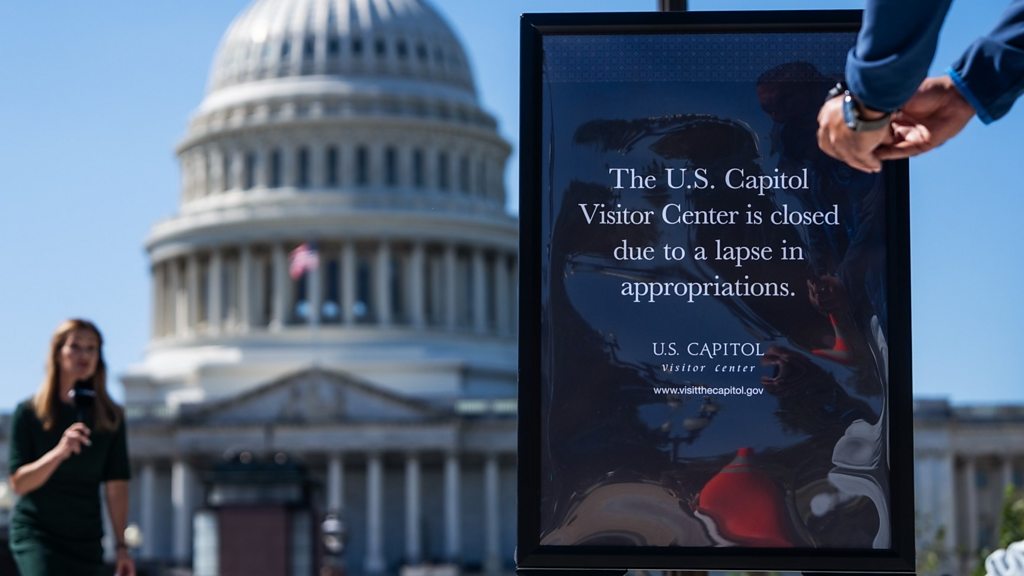Federal Government Shutdown 2025: What Americans Need to Know
Federal Government Shutdown 2025: What Americans Need to Know
The United States federal government officially shut down at 12:01 AM on October 1, 2025, after Congress failed to pass a funding bill before the fiscal year deadline. This marks the first government shutdown in nearly seven years, affecting approximately 750,000 federal workers and millions of Americans who depend on government services.

What Caused the Federal Government Shutdown?
The shutdown occurred because Republican and Democratic politicians failed to reach an agreement on a budget funding bill. Despite Republicans controlling both chambers of Congress, they lacked the 60 votes needed in the Senate to pass the spending legislation, giving Democrats significant negotiating power.
The primary sticking points include disagreements over healthcare spending, with Democrats demanding an extension of expiring tax credits that make health insurance more affordable for millions of Americans. They also oppose cuts to Medicaid and various government health agencies that Republicans have proposed.
Trump Administration's Response
Unlike previous administrations, the White House appears willing to maintain an extended shutdown. President Trump has suggested using this opportunity to identify "non-essential" workers who could be permanently laid off, stating "We'll be laying off a lot of people" just before the shutdown began.

Who Is Affected by the Government Shutdown?
Approximately 750,000 federal workers - roughly 40% of the federal workforce - are expected to be furloughed without pay. These employees are classified as "non-essential" and must stop working until the government reopens, though they typically receive back pay once operations resume.
Essential workers, including border protection agents, air traffic controllers, and medical personnel, must continue working but won't receive paychecks until the shutdown ends. Members of Congress, however, continue receiving their constitutionally protected salaries.
Federal Agencies Hit Hardest
The Department of Health and Human Services expects to furlough over 32,000 of its nearly 80,000 workers. The Centers for Disease Control and Prevention (CDC) will maintain disease outbreak monitoring but cannot provide routine health guidance to state and local agencies. The National Institutes of Health has frozen research contracts and won't admit new patients unless medically necessary.
Essential Services That Continue During Shutdown
Despite the shutdown, critical government functions continue operating. Social Security and Medicare payments will be sent on schedule, as these are considered mandatory spending under federal law. However, processing new applications may face delays due to reduced staffing.

Air travel continues with air traffic controllers remaining on duty, though the Federal Aviation Administration has stopped hiring and training new controllers. The Transportation Security Administration (TSA) maintains airport security screening, but travelers may experience longer wait times.
Military and Veterans Services
Military personnel remain on active duty but won't receive pay until the shutdown ends. The Department of Veterans Affairs expects 97% of its employees to continue working, ensuring most veteran benefits and services remain available. However, some death benefits and cemetery maintenance services are suspended.
Economic Impact and Market Response
Economic analysts estimate the shutdown could reduce GDP growth by 0.1 to 0.2 percentage points for each week it continues. The 2018-2019 shutdown, which lasted 35 days, reduced economic output by approximately $11 billion, with $3 billion never recovered.
Stock markets have shown relatively muted reactions so far, though uncertainty increases with the shutdown's duration. Key economic data releases, including the monthly jobs report, may be delayed, adding to market uncertainty.

Impact on Everyday Americans
National parks remain partially open with roads, trails, and outdoor areas accessible, but visitor centers and staffed facilities are closed. Emergency services are limited, and no new permits will be issued during the shutdown.
Student loan processing through the Department of Education continues, with Pell Grants and Federal Direct Student Loans still being disbursed to nearly 10 million students. However, borrowers must continue making loan payments during the shutdown.
Food Assistance Programs
The Supplemental Nutrition Assistance Program (SNAP) will continue through October with pre-committed funding. However, the Women, Infants and Children (WIC) program faces uncertainty, with the National WIC Association warning of "devastating disruptions" if the shutdown lasts more than two weeks.
How Long Could the Shutdown Last?
The duration depends entirely on when Congress reaches a compromise. Historical precedent shows significant variation - the longest shutdown lasted 35 days in 2018-2019, while others have been resolved within days or weeks.
This shutdown differs from previous ones because the Trump administration appears willing to use it as leverage for broader government restructuring. Both parties blame each other, with Republicans arguing Democrats caused the shutdown through unreasonable demands, while Democrats maintain they're protecting essential healthcare programs.

What Happens Next
The shutdown's resolution requires either Republican concessions on healthcare spending or Democratic agreement to accept reduced funding levels. President Trump's threat to make some furloughs permanent adds urgency to negotiations, though it also hardens positions on both sides.
Congressional leadership continues meeting, but no breakthrough appears imminent. The political calculus may shift if public pressure mounts or economic impacts become more severe.
Frequently Asked Questions
Will I still receive my Social Security check during the shutdown?
Yes, Social Security and Medicare payments continue on schedule during a government shutdown. These are considered mandatory spending and are not affected by appropriations lapses.
Can I still travel by air during the shutdown?
Yes, commercial air travel continues with air traffic controllers and TSA agents working. However, you may experience longer wait times, and some services may be limited.
Are national parks closed during the shutdown?
National parks remain partially open. Roads, trails, and outdoor areas are accessible, but visitor centers, museums, and staffed facilities are closed with limited emergency services.
Will federal workers get back pay after the shutdown ends?
Yes, both furloughed and essential employees who worked without pay typically receive back pay once the government reopens, though the timing varies.
How long do government shutdowns usually last?
Shutdown duration varies widely. The longest was 35 days in 2018-2019, while others have lasted just a few days. The average since 1980 is about 8 days.
Stay Informed: This is a developing situation that affects millions of Americans. Share this article to help others understand the shutdown's impact and stay updated on federal services. Monitor official government websites for the latest information on specific agency operations.
📢 Share this important information: Twitter | Facebook | LinkedIn | WhatsApp